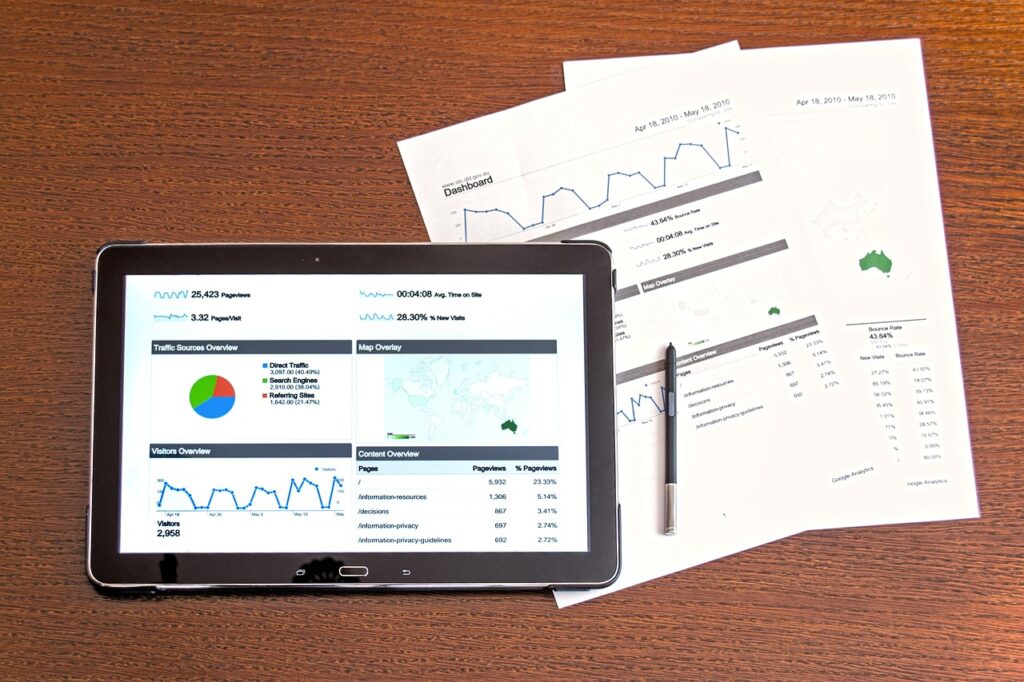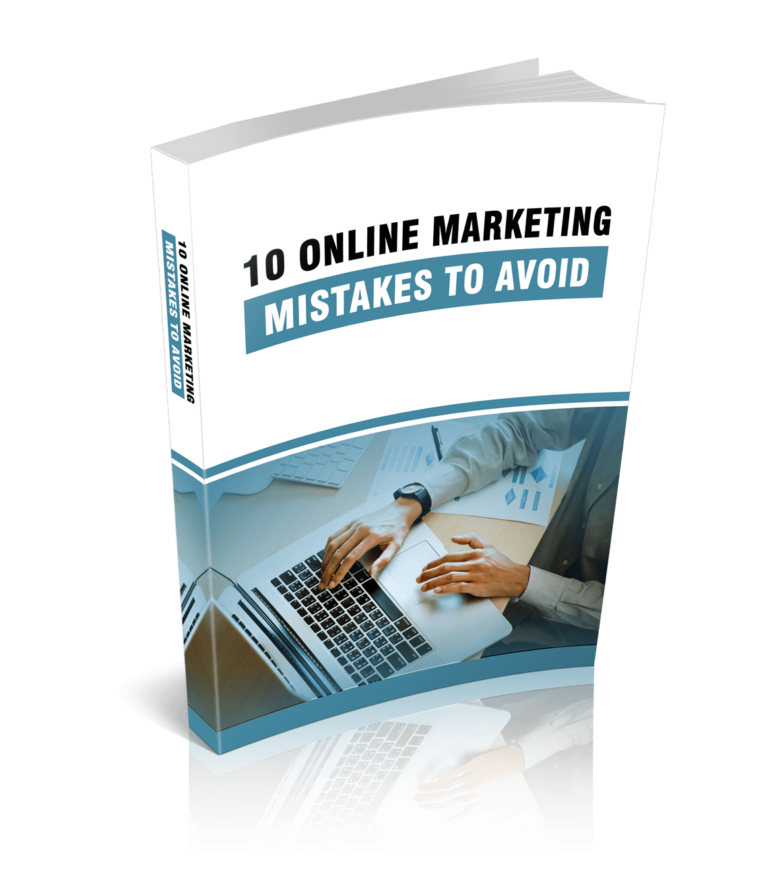The main purpose of your business website is to attract leads and grow sales. You want to reach prospects, attract the right audience, and generate sales from your site.
You want to know how visitors interact with your content, where they are coming from, how long they stay on your pages, how often they visit, and so on. That is the only way to ensure your website gets you the results you want.
Today we’ll talk about 10 conversion metrics to track to get the most from your site and ensure ROI.
Let’s get started!
SUBSCRIBE TO INCOME PATROL
Get updates on the latest posts and more from Income Patrol straight to your inbox.
1. TRAFFIC ACQUISITION SOURCES
This is one of the most important conversion metrics to track as a website owner. You want to know where your traffic is coming from to ensure you understand your audience and reach them at their different points of need.
So, where are your visitors coming from? And How did they arrive at your site?
Did they find you through organic search, ads, or referrals? Did they search for your website directly by typing your site URL? Perhaps they found you via email? Determine how your visitors arrived at your site to identify the most effective marketing channels and ineffective ones.
Organic search is when users find you through search engines like Google. If you have an effective SEO strategy, this is where most of your traffic should be coming from.
Ads or paid search is when they find you through your adverts.
Referral visitors find your site by clicking on external links leading to your website. These are the links shared on social media, other websites, and other marketing channels.
Use Google Analytics to identify your traffic sources or any other analytics tool you prefer.
Analyze different traffic sources and focus on ones that get you more visitors, sign-ups, and leads. For example, if most of your traffic comes from email or paid search, that’s where most of your efforts should go.
If certain sources bring higher bounce rates, then your content isn’t relevant to those visitors. So, you can either stop using those marketing channels or find a better way to reach the right audience.
2. CLICK-THROUGH RATE
You want to know how many clicks you receive to your pages and from which sources. So, calculate the percentage of people who visited your site or landing pages by clicking on your ad.
This also helps you determine just how effective your ad campaign is. It makes it easy for you to identify well-performing ads and low-quality ones so you can improve them.
Calculate your click-through rate or CTR by dividing the number of clicks you get by impressions.
A lower CTR shows that your ads aren’t attracting any clicks and so you need to improve them to appeal to your audience.
A/B test your ads and the CTAs on your landing pages. Make sure they are clear and persuasive enough to get your visitors to take action.
Calculating your CTR also allows you to determine how effective your keywords are. So, prioritize it.
3. PAGEVIEWS
Track page views to improve your conversion rates.
Having a professional website and well-structured content isn’t enough if you fail to reach your audience. Therefore, know how many views you get on every page. That means your landing page, blog, pricing page, services page, contact page, and every other page on your website. This is a great way to determine how many people come to your site daily, weekly, and monthly so you can determine whether or not your marketing strategy is effective.
Identify your most viewed pages to understand your audience better and ensure you cater to their needs and turn them into customers. Know the pages that people spend most of their time on and what actions they take.
Another important metric to track is the number of pages visited per session. This allows you to see how long users stay on your website, which pages they find interesting, and determine how user-friendly your site is.
4. TIME SPENT ON SITE
The time users spend on your website is important. It determines whether or not they buy, sign up for your newsletter, or take any other desired action. You want to keep them longer on your pages and increase your chances of turning them into email subscribers and or customers. So, track the average time visitors spend on your site.
Track the average time spent per visit and also how long users stay on specific pages. Doing this allows you to determine how engaging your content is, how valuable it is to your audience, and how easy your site is to navigate.
The best way to ensure your visitors stay on your pages longer is to share interesting and relevant content, have a responsive site, improve page load times, and ensure your website is easy to navigate.
Page speed also determines how Google ranks your website. So, don’t overlook it.
5. BOUNCE RATE
Find how many people leave your site within a few seconds or after viewing just one page without taking any action.
Depending on the purpose of each page, a higher bounce rate can mean lower or zero conversions. So, understand the purpose of every page and optimize them to get you the results you desire. For example, your main aim is to convert visitors into customers through your pricing page. So, use persuasive text, add your pricing plans, list the benefits of choosing certain offers, and add clear calls to action. Doing this helps you attract attention, raise interest, inspire action, and get more conversions.
Identify pages with a high bounce rate, identify the reasons for it, and make the necessary improvements. Some of the reasons people are exiting your pages are weak traffic sources, irrelevant content, poor design, a complex checkout process, high load times, and landing users on the wrong page.
Analyze your top exit pages to improve your exit rate so you can attract leads and get more conversions.
Some of the best ways to improve your exit rate, according to HubSpot is to improve your internal linking strategy and add exit-intent popups.
6. VALUE PER VISIT
Your success depends on the value you get from every visitor. Having lots of traffic isn’t enough because at the end of the day it’s not about how many people visit your website but how many of them turn into customers.
So, understand the value you get from your visitors. For example, do they sign up for your newsletter? Do they buy from you? Do they leave reviews? Do they take the next desired step after interacting with particular pages?
Identify pages that lead to more conversions and ones that have a higher bounce rate.
Calculate the value per visit by dividing the total number of visits you get by the total value created or the total amount of money made.
The value you get per visit doesn’t entirely depend on the amount of money you make. Depending on your site goals, they can be about the number of views, social shares, and interactions your page gets. Especially if you are measuring the value you receive from your blog visitors.
However, if you have affiliate links or aren’t only using your blog for content marketing, you should track your conversion rates. For example, how many users use your affiliate links to buy, how many of them turn into customers, and so on.
Another important conversion metric to track is revenue attribution. This is when you track your visitors from when they visit your page to when they complete a purchase.
Revenue attribution helps you analyze and understand your marketing and sales efforts. It allows you to track the time you start generating revenue from certain activities and how much you make.
7. LANDING PAGES
Your landing page plays an important role in determining who stays or leaves your website. It is the first page your visitors see and so, you need to make the most of it. You have to capture the user’s attention and inspire action. You want to make sure the user takes the desired step. For example, signing up for your newsletter, knowing about your new offer, finding out about available discounts, learning something new in your industry, and so on. That’s how you capture attention and get more conversions.
Make sure your landing page doesn’t solely focus on selling your product but bringing value to your audience’s lives as well. That is a great way to boost engagement and get more people to your site.
One thing you can do is share useful resources or give something away and then promote your offer.
Make sure your landing pages have at least 3 CTAs to get people to take action and increase your chances of success. Your CTAs must stand out, create a sense of urgency, and invite clicks.
Revise and measure your keyword rankings as well to increase visibility and conversions.
Find out what keywords you rank for and how effective they are in reaching your ideal customers. Identify keywords relevant to your audience and use them in your content strategy to bring prospects to your site.
Learn more about high-ranking keywords in your niche and competitor keywords with SEMrush and other top keyword research tools.
8. MOBILE AND DESKTOP VISITORS
Know where your site visitors are coming from and the kind of devices that they use to navigate your site. This makes it easy for you to create a better user experience, keep people on your pages, and get more conversions.
So, which devices do your users prefer? Do most of your visitors visit your site through mobile devices or desktops? Answer that and design your site to cater to your audience’s needs.
If most of your traffic comes from mobile devices, optimize your website for mobile view and make sure it’s responsive. Your site should make it easy for users to go through your pages as fast as they need to and find what they are looking for easily. So, increase your page loading times and have a mobile-friendly design.
Test your site’s speed and responsiveness with PageSpeed Insights or BrowserStack.
Test all features and make sure everything functions as it should both on desktop and mobile view. That means checking if your forms are working correctly, ensuring your calls to action are properly configured, and so on.
Knowing the devices used by most of your visitors helps you keep people on your site, guide them through your content, create a great user experience, and boost sales.
9. EXIT PAGES
Identify your exit pages to understand your audience better, find out what areas need improvement, and make necessary adjustments.
For example, if you have an eCommerce store, know on which stages your visitors abandon their carts. Do they leave right in the middle of filling in their details? Do they leave after you prompt them for their email addresses?
Know at which stage they leave and try to find the reason for it. Maybe the checkout process is too complicated and has too many steps? Maybe users don’t like the idea of joining your mailing list to complete a purchase? Maybe there are surprise fees or costs and they hadn’t budgeted for them? Whatever the reason, figure it out and try to solve it.
If the checkout process is too complicated and has too many steps, simplify it and only ask for the necessary information. If your visitors always abandon their carts when prompted for their email addresses, make it optional. So, they can continue with the purchase without giving you their contact details.
If your landing page is your exit page, find the reason and make the necessary changes. It could be that your landing page doesn’t have a call to action to show users where you want them to go next. Perhaps your page focuses too much on promotional content and getting visitors to buy your product? Make sure you analyze your page and determine why people aren’t staying as long as you want them to.
10. COST PER CONVERSION
This is one of the most important metrics to track because it has a huge impact on your overall success. Calculate your lead generation costs to avoid losses and ensure profits. Make sure you aren’t losing money to acquire clients.
The money you spend per conversion mustn’t be more than the value each conversion brings. For example, if it costs you $150 to convert one user, each conversion must place an order worth $200 or more. If the order is below $150, you’ll soon have a negative net income. Something you want to avoid.
Don’t spend too much money on generating leads and fail to take into account how much you’ll make per every successful lead. Make sure you don’t put in more than you’re getting out to avoid losses.
Track your CPM or cost per thousand impressions. Find out how effective your ads are by comparing different campaigns so you can determine whether or not you should continue running them.
CPM helps you optimize your ads, determine how much you need to spend, avoid losses, ensure profits, and maximize your reach.
The most important thing to do when calculating your conversion rates is to take your costs per conversion and overall margins into account. That’s how you avoid losses and ensure profits.
Tracking your website conversion metrics is key to maximizing your reach and reaching your business goals. It helps you understand your marketing and sales strategy better. Making it easy for you to identify where you are excelling and areas that need improvement.
The best way to succeed is to track the right metrics. Ones that have a direct impact on your sales and main business goals.
We only covered the important metrics you need to track to ensure your website gets you the desired results. So, make sure you follow what we covered.
Understanding your audience is as important as selling your product. So, focus on studying user behavior and identifying their needs to get them to consume your content and convert.
Track all the conversion rate metrics we covered today to set yourself up for success. But don’t spend too much time deciding which metric to track first because they all matter. Just pick whichever you want and go with it.
If you can’t decide, start from the top and follow the list as it is.
BONUS
Track and analyze new visitors and regular visitors. Find out how many new visitors you get daily, weekly, or monthly and how many people return to your site. The best way to increase your conversions is to keep people coming back to your site. So, make sure you add value to first-time visitors and turn them into repeat visitors. You can achieve this through giveaways, discounts, and sharing valuable content.
LIMITED-TIME OFFER!
With LIFETIME ACCESS membership ($67) you have access to ALL exclusive materials (current and upcoming) for lifetime. We create new courses, ebooks, webinars and downloads on a regular basis. This offer expires soon and will be replaced with monthly-paid subscription, so hurry up! Get access HERE!





